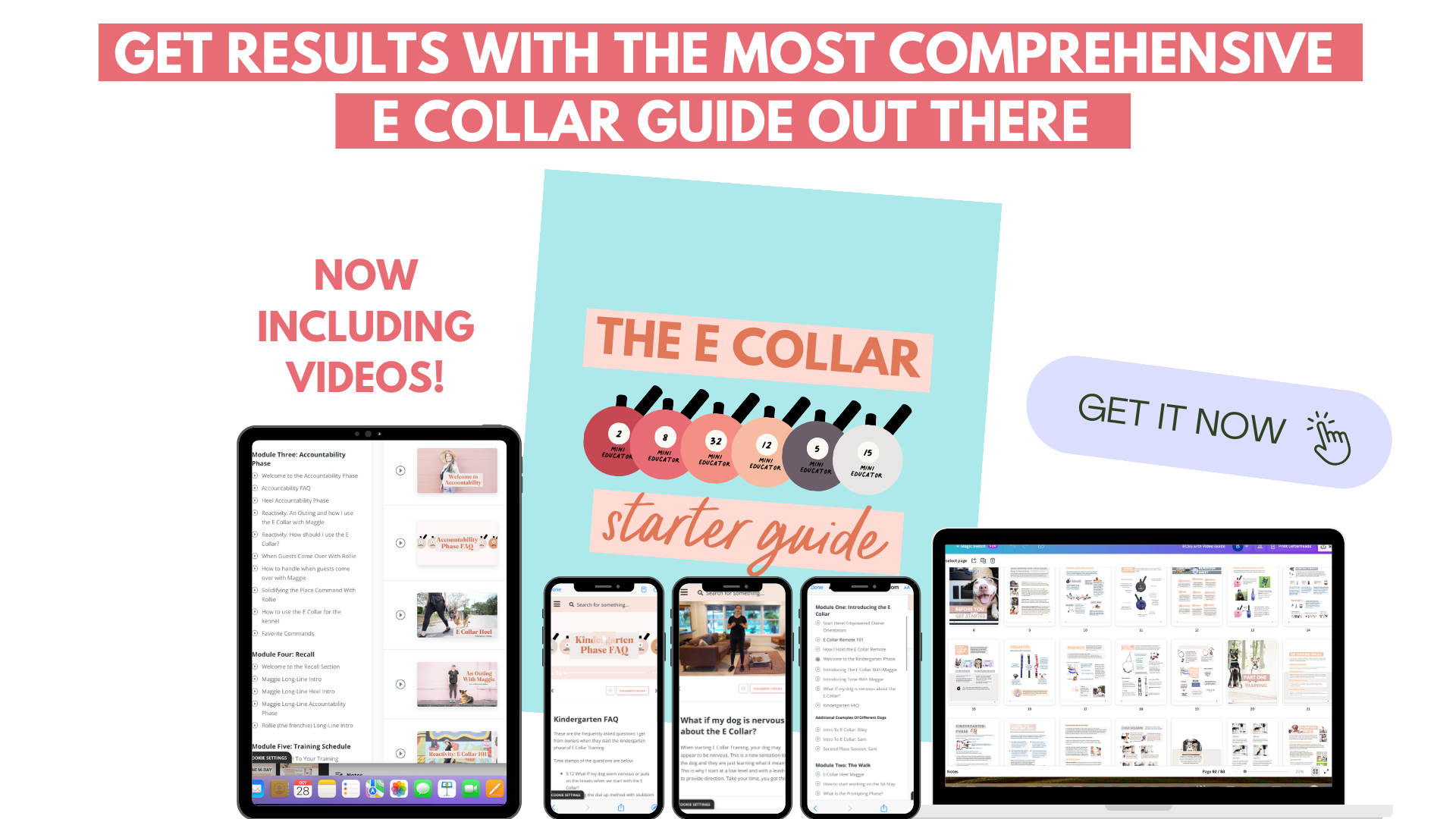Which guide is best for you?
It's always been a dream of mine to make E Collar training accessible for owners, because I know many of you have been told that “you must be a trainer to use the E Collar” and this just isn't true. Some of you will need additional help from a trainer and that’s great. I mean, I’m a board and train trainer - I love working with owners! But I also know there is so much you can do on your own if you have the information.
I offer three separate training guides. Everything you need to work through problems and enjoy MORE with your dog. That’s my ultimate goal for you.
It can be confusing if you're unsure which guide is best for you and your dog, so let's break each one down.
E Collar Starter Guide: Perfect for beginners, this step-by-step guide introduces you to the basics of using an e collar to establish clear communication with your dog, giving you the tools to address common behavioral issues and start enjoying more time together.
*Our E Collar Starter Guide also includes a video library! You can hear exactly when I'm using the E Collar and watch me work with different dogs for real-life examples. You get to see how I work through pushy stuff with a dog in the first session, how I correct dogs for things like jumping, biting the leash or not listening to recall - AND FAQ videos for each E Collar phase.
If you're struggling with problem behaviors like barking, reactivity, or anxiety - will this guide be helpful? YES. The first step to effectively stopping problem behaviors is teaching your dog what the E Collar means. Think of it like learning a new language. You teach your dog what the E Collar means with our E Collar Starter Guide, and then you can say no to things like barking, pulling on the leash, or jumping on the counter.
Our E Collar Starter Guide takes you through the stages of E Collar training - kindergarten, prompting, accountability, and real life.
**The Accountability Phase is when we start to really get into corrections and how to use the E Collar to effectively stop certain behaviors. This is not just a how-to teach what the E Collar means kind of guide. I want you to feel confident using it to stop things like barking, jumping, leash pulling, running off when called - all the things I know you’re struggling with - I’m showing you how to use the E Collar to stop all of those things. Because when you are able to say no to certain things, you can say YES to so much more.
Reactive Dog Handbook: After writing the E Collar Starter Guide, I kept getting asked about reactivity and how I use the E Collar to work through it - that's what this guide is all about. If you’re struggling with reactivity on walks, in your home or even in the car - this comprehensive guide helps you understand the root causes of your dog’s triggers and provides proven strategies to transform stressful outings into calm, manageable walks.
In this guide, I give examples of different dogs I’ve worked with and where they fall on the reactive dog spectrum - mild, medium, and intense. By understanding where your dog lands on the spectrum, you’ll feel more confident when dialing up on the E Collar (the number one thing most owners struggle with) and how to best approach certain situations when working through the reactivity.
Your Guide to Separation Anxiety: For the anxious dogs who struggle when left alone, this guide offers practical steps to break the anxious loop and help your dog feel relaxed and secure in their own space, using the power of E Collar training to create lasting calm.
Whatever your challenge, there’s a guide for that. Start with the one that best fits your needs and take the first step toward a more balanced, happier dog.
We also have our BUNDLES - want to get started with E Collar training while also addressing the reactivity? Our Reactive Dog Bundle is just what you need. And each bundle comes with a discount! I hope it gives you the head start you need to live a calm and happy life with your dog.

